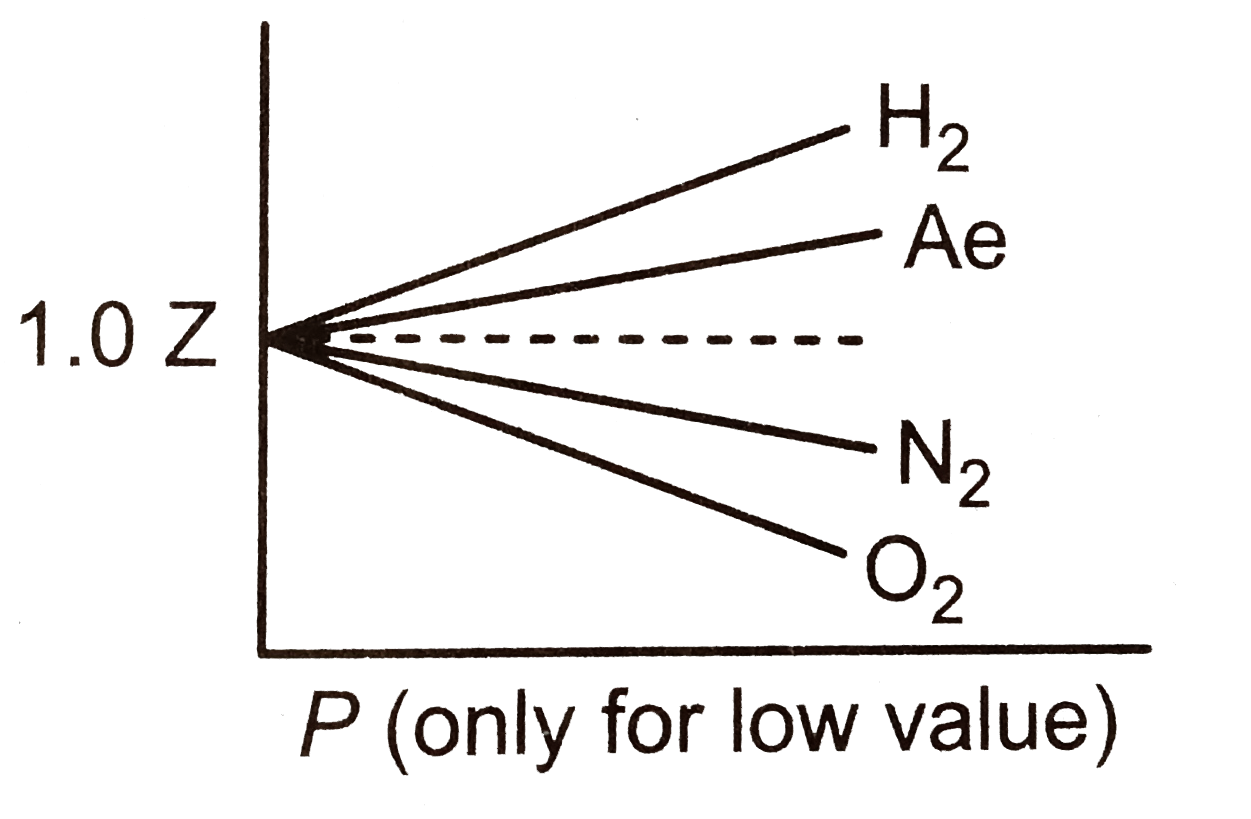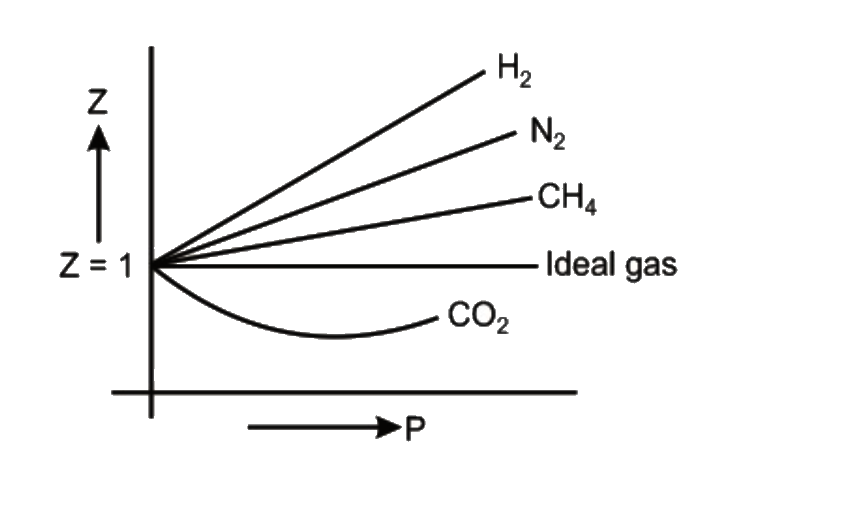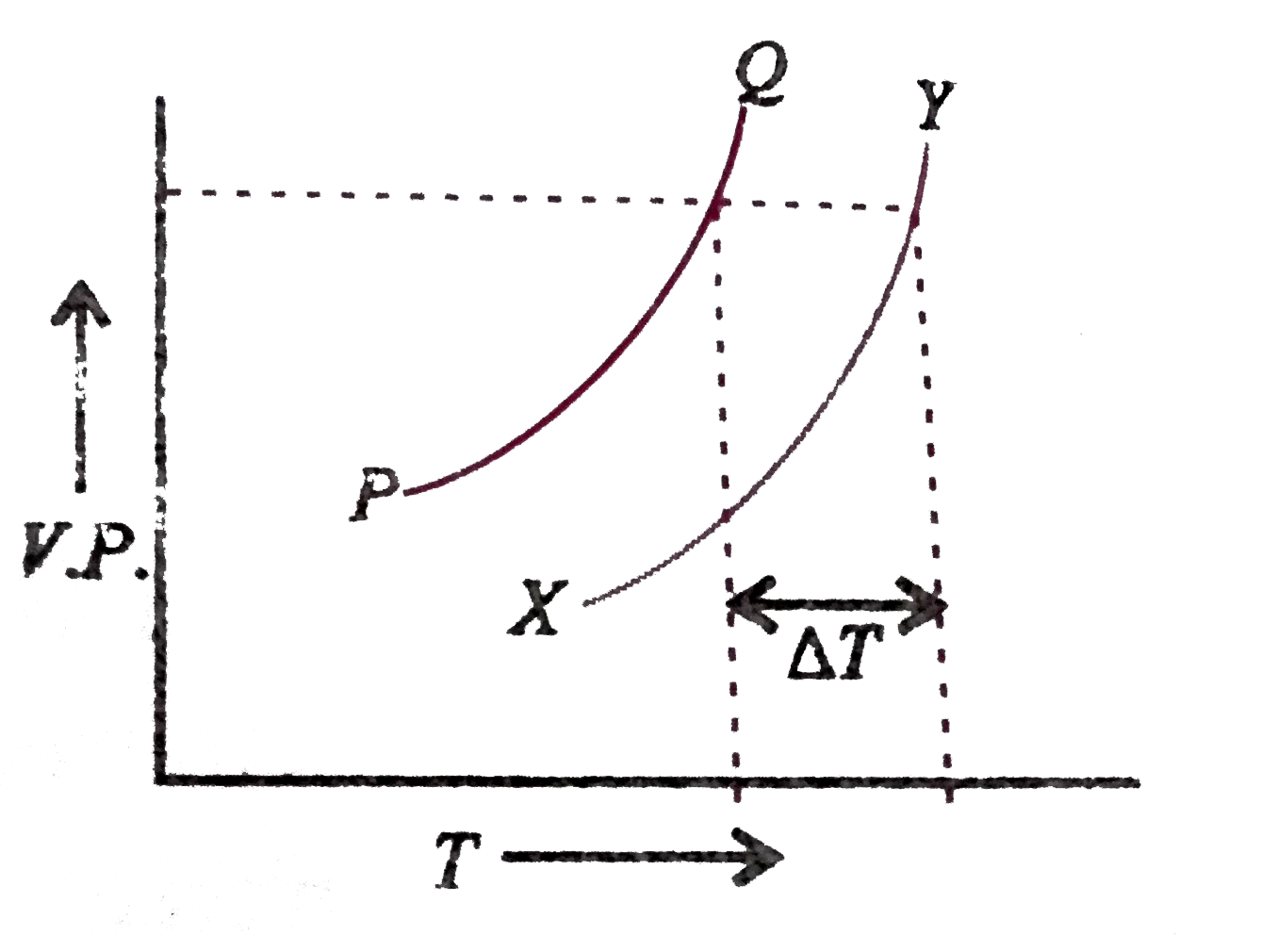As the pressure approaching zero at very low pressure the curves plotted between comperessibility factor Z and P for n moles of gases having following characteristics
The intercept on y-axis leads to a value of unity
The curves possess differnet slopes for differnet gases at same temperature
The intercept on y-axis leads to a value of 'n' .
The curves same slope for a gas at different temperatures .
PVnRT=Z At very law P or P→0,Z=1 sice ideal gases. Also as the temperature increases Z approaches unity
 .
.
Topper's Solved these Questions
- BOOK - P BAHADURCHAPTER - GASEOUS STATEEXERCISE - Exercise B1videos
GASEOUS STATE
- BOOK - P BAHADURCHAPTER - GASEOUS STATEEXERCISE - Exercise 41videos
GASEOUS STATE
- BOOK - P BAHADURCHAPTER - GASEOUS STATEEXERCISE - Exercise 31videos
GASEOUS STATE
- BOOK - P BAHADURCHAPTER - CHEMICAL EQUILIBRIUMEXERCISE - Exercise134videos
CHEMICAL EQUILIBRIUM
- BOOK - P BAHADURCHAPTER - IONIC EQUILIBRIUMEXERCISE - Exercise85videos
IONIC EQUILIBRIUM
Similar Questions
Knowledge Check
- Question 1 - Select One
Ideal gas equation is represented as PV=nRT. Gases present in universe were fond ideal in the Boyle's temperature range only and deviated more from ideal gas behavior at high pressure and low temperature.
The deviation are explained in term of compressibility factor z. For ideal behavior Z=PVnRT=1. the main cause to show deviavtion were due to wrong assumptions made about forces oif attractions (which becomes significant at high pressure ) and volume V occupied by molecules in PV=nRT is supposed to be volume of gas or the volume of container in which gas is placed by assuming that gaseous molecules do not have appreciable volume. Actually volume of the gas is that volume in which each molecule of gas can move freely. If volume occupied by gaseous molecule is not negligible, then the term V would be replaced by the ideal volume which by available for free motion of each molecule of gas in 1 mole gas.
Vactual= volume of container -volume occupied by molecules
=v−b
Where b represent the excluded volume occupied by molecules present in one mole of gas.
Similarly for n mole gas
Vactual=v−nb
As the pressure approaching zero i.e. at very low pressure. The curves plotted between compressibility factor Z and P for n mole of gases have the following characteristics.
(I) The intercept on y-axis leads to a value of unity
(II) The intercept on y axis leads to a value of 'n'
(III) The curves posses same slope for different gases at same temperature
(IV) The curves posses different slopes for different gases at same temperature.
(V) The curves posses same slope for a gas at different temperatureAI,IV,VBII,IIICI,II,III,IVDII,III,V - Question 2 - Select One
At very low pressures, the compressibility factor of CO2having constant value of molar volume
Aincreases with increase in temperatureBdecreases with increase in temperatureCremains constant with change in temperatureDis one - Question 3 - Select One
At very high pressure, the compressibility factor of one mole of a gas is given by :
A1+pbRTBPbRTC1−pbRTD1−b(VRT)
Which of ther following is a Boyle's plot at very low pressure
View SolutionIf Z is a compressibility factor, van der Waals' equation at low pressure can be written as
View SolutionIf Z is a compressibility factor, van der Waals' equation at low pressure can be written as
View SolutionIf Z is a compressibility factor, van der waals equation at low pressure can be written as
View SolutionConsider the graph between compressibility factor Z and pressure P,

The correct increaing order of ease of liquefaction of the gases shown in the above graph isView Solution


